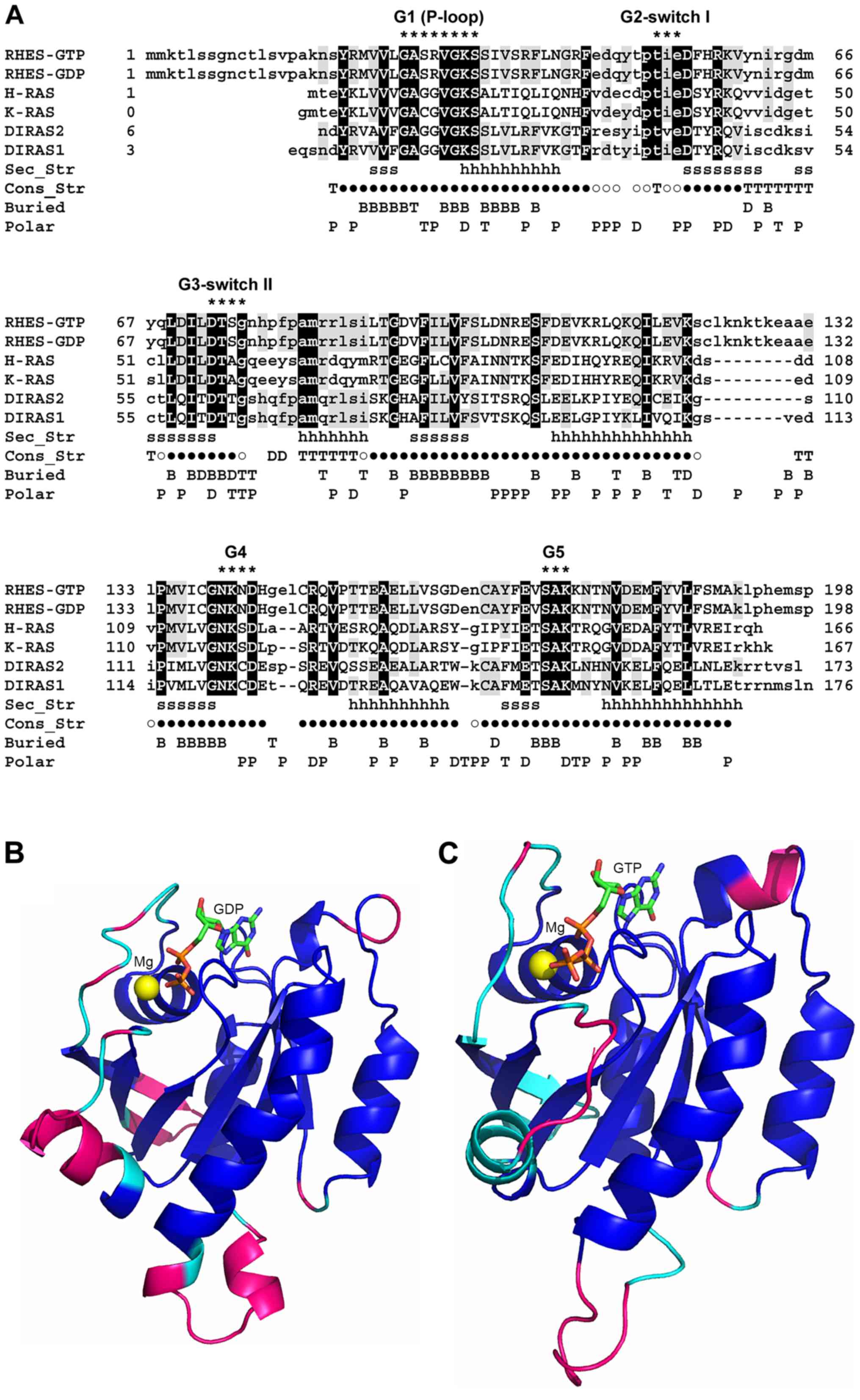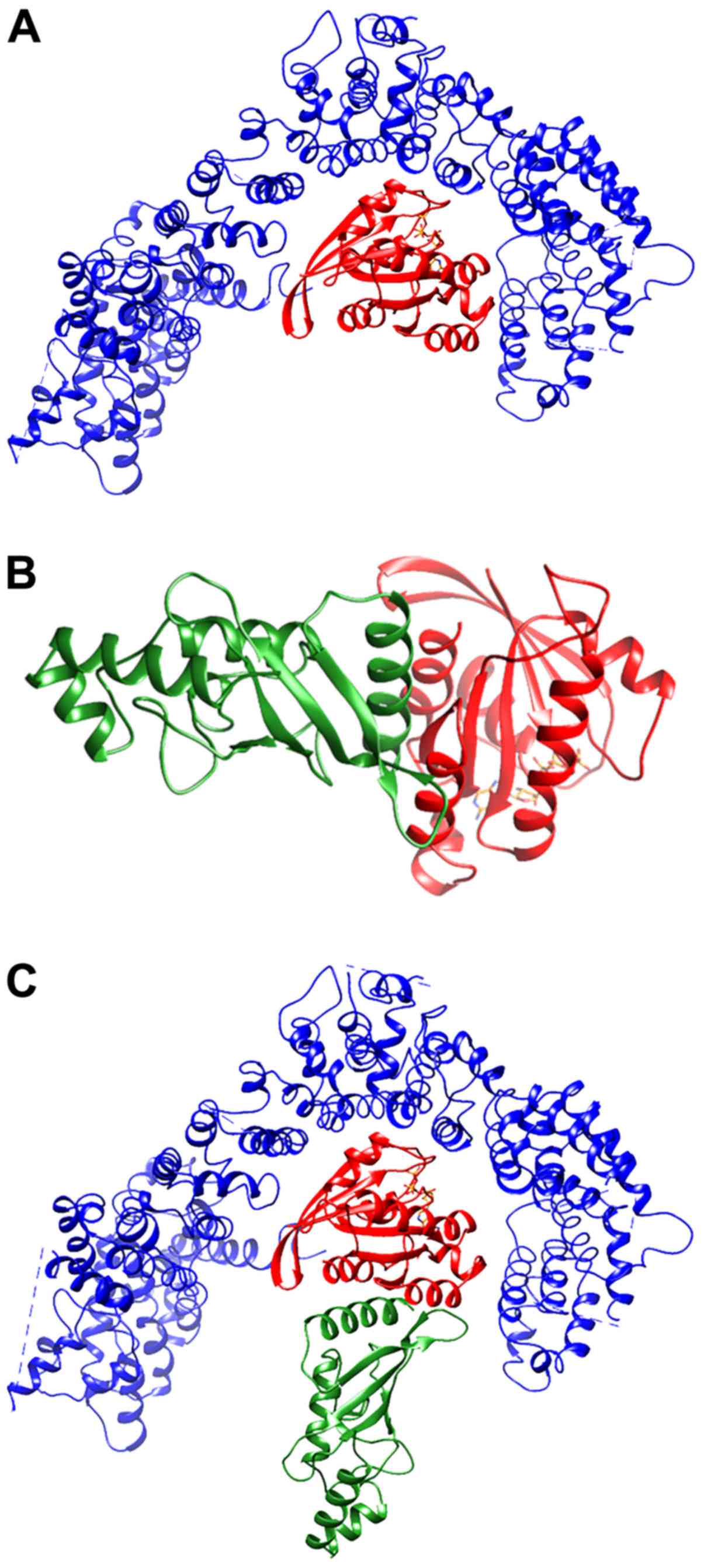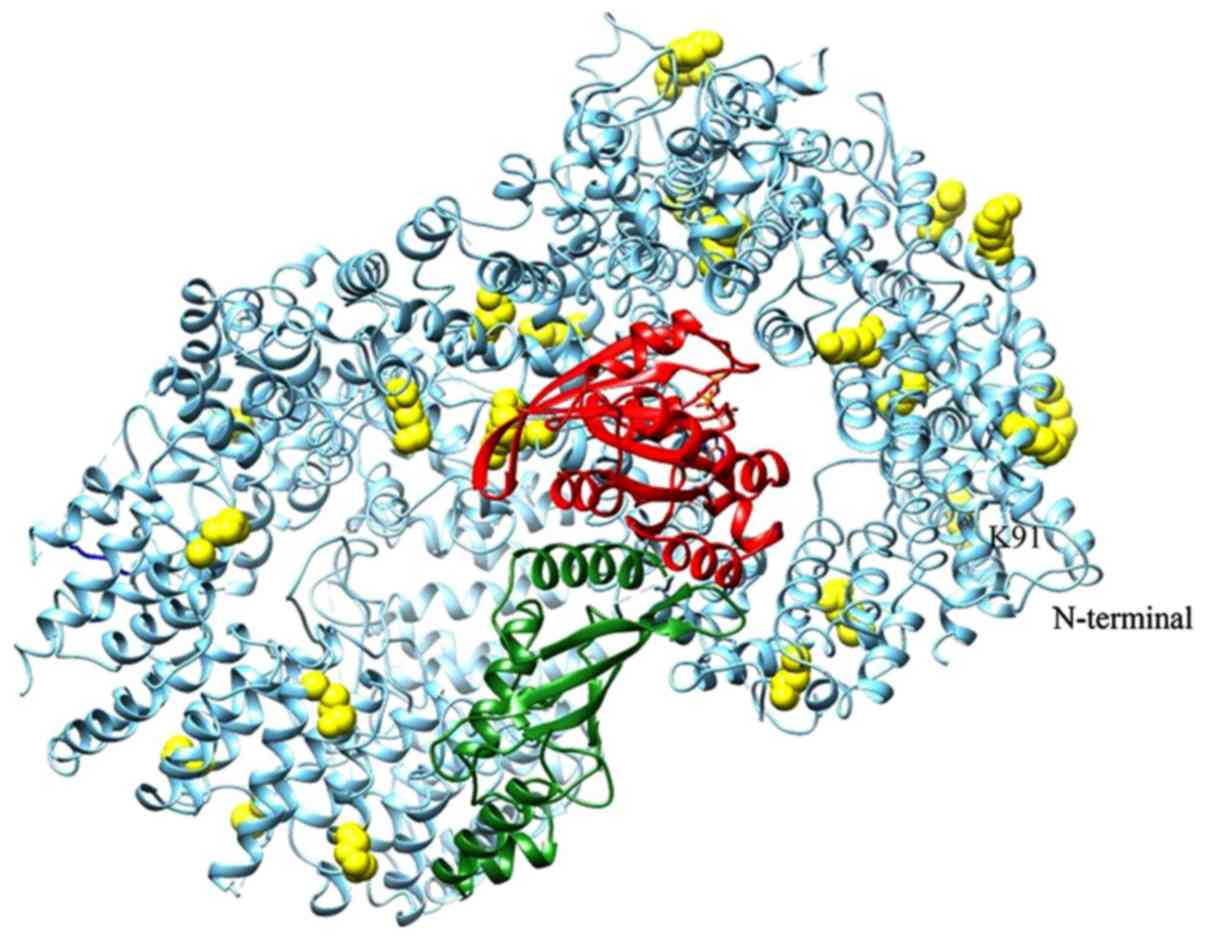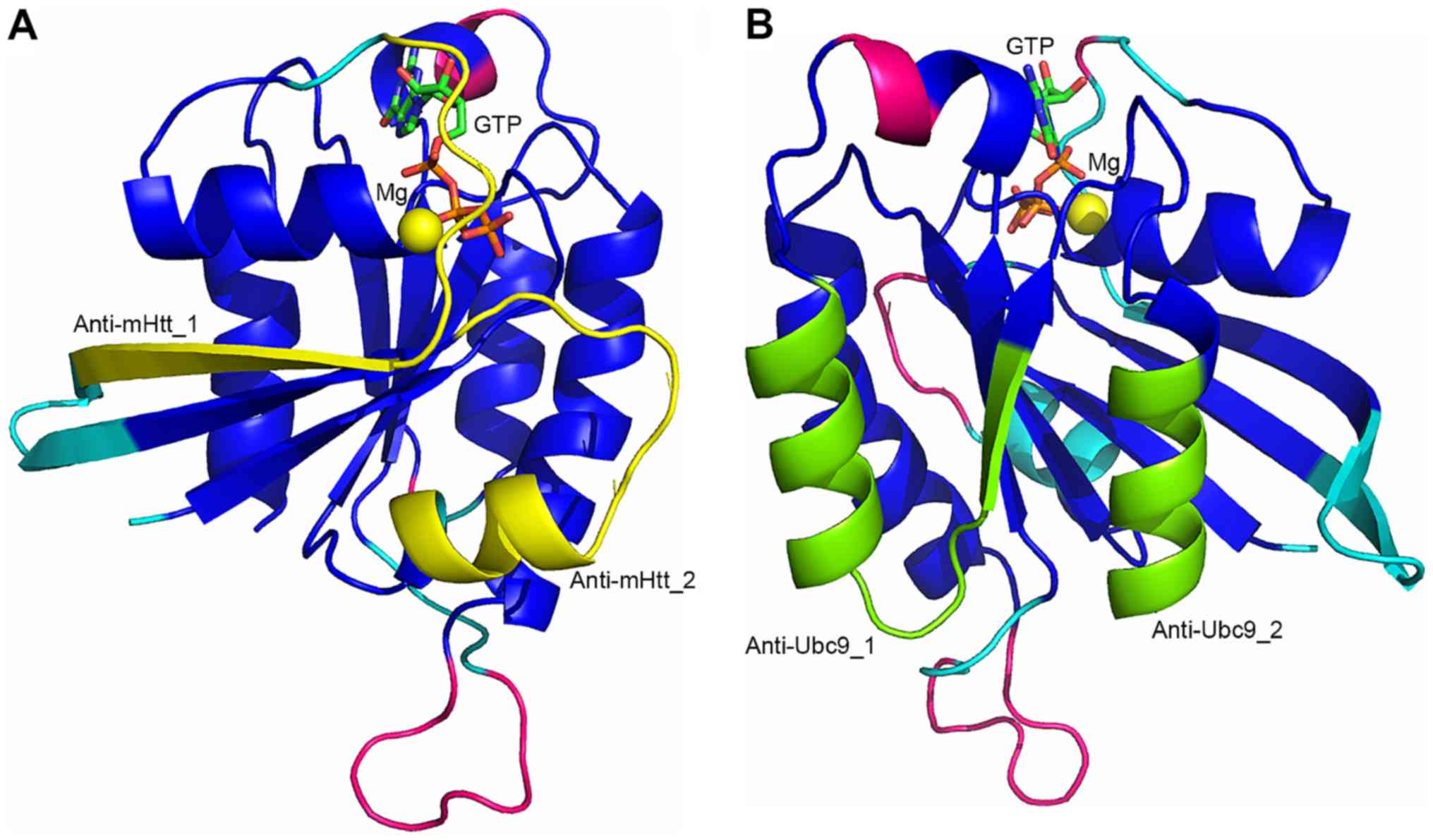|
1
|
Testa CM and Jankovic J: Huntington
disease: A quarter century of progress since the gene discovery. J
Neurol Sci. 396:52–68. 2019. View Article : Google Scholar
|
|
2
|
Gusella JF and MacDonald ME: Huntington's
disease: CAG genetics expands neurobiology. Curr Opin Neurobiol.
5:656–662. 1995. View Article : Google Scholar : PubMed/NCBI
|
|
3
|
Saudou F, Finkbeiner S, Devys D and
Greenberg ME: Huntingtin acts in the nucleus to induce apoptosis
but death does not correlate with the formation of intranuclear
inclusions. Cell. 95:55–66. 1998. View Article : Google Scholar : PubMed/NCBI
|
|
4
|
Gong B, Lim MC, Wanderer J, Wyttenbach A
and Morton AJ: Time-lapse analysis of aggregate formation in an
inducible PC12 cell model of Huntington's disease reveals
time-dependent aggregate formation that transiently delays cell
death. Brain Res Bull. 75:146–157. 2008. View Article : Google Scholar
|
|
5
|
Lu B and Palacino J: A novel human
embryonic stem cell-derived Huntington's disease neuronal model
exhibits mutant huntingtin (mHTT) aggregates and soluble
mHTT-dependent neurodegeneration. FASEB J. 27:1820–1829. 2013.
View Article : Google Scholar : PubMed/NCBI
|
|
6
|
Harrison LM and Lahoste GJ: The role of
Rhes, Ras homolog enriched in striatum, in neurodegenerative
processes. Exp Cell Res. 319:2310–2315. 2013. View Article : Google Scholar : PubMed/NCBI
|
|
7
|
Sipione S and Cattaneo E: Modeling
Huntington's disease in cells, flies, and mice. Mol Neurobiol.
23:21–52. 2001. View Article : Google Scholar : PubMed/NCBI
|
|
8
|
Shahani N, Swarnkar S, Giovinazzo V,
Morgenweck J, Bohn LM, Scharager-Tapia C, Pascal B, Martinez-Acedo
P, Khare K and Subramaniam S: RasGRP1 promotes amphetamine-induced
motor behavior through a Rhes interaction network ('Rhesactome') in
the striatum. Sci Signal. 9:ra1112016. View Article : Google Scholar
|
|
9
|
Valjent E: Striatal signaling: Two decades
of progress. Front Neuroanat. 6:432012. View Article : Google Scholar : PubMed/NCBI
|
|
10
|
Ross CA and Tabrizi SJ: Huntington's
disease: From molecular pathogenesis to clinical treatment. Lancet
Neurol. 10:83–98. 2011. View Article : Google Scholar
|
|
11
|
Falk JD, Vargiu P, Foye PE, Usui H, Perez
J, Danielson PE, Lerner DL, Bernal J and Sutcliffe JG: Rhes: A
striatal-specific Ras homolog related to Dexras1. J Neurosci Res.
57:782–788. 1999. View Article : Google Scholar : PubMed/NCBI
|
|
12
|
Subramaniam S, Sixt KM, Barrow R and
Snyder SH: Rhes, a striatal specific protein, mediates
mutant-huntingtin cytotoxicity. Science. 324:1327–1330. 2009.
View Article : Google Scholar : PubMed/NCBI
|
|
13
|
Subramaniam S, Mealer RG, Sixt KM, Barrow
RK, Usiello A and Snyder SH: Rhes, a physiologic regulator of
sumoylation, enhances cross-sumoylation between the basic
sumoylation enzymes E1 and Ubc9. J Biol Chem. 285:20428–20432.
2010. View Article : Google Scholar : PubMed/NCBI
|
|
14
|
Seredenina T, Gokce O and Luthi-Carter R:
Decreased striatal RGS2 expression is neuroprotective in
Huntington's disease (HD) and exemplifies a compensatory aspect of
HD-induced gene regulation. PLoS One. 6:e222312011. View Article : Google Scholar : PubMed/NCBI
|
|
15
|
Baiamonte BA, Lee FA, Brewer ST, Spano D
and LaHoste GJ: Attenuation of Rhes activity significantly delays
the appearance of behavioral symptoms in a mouse model of
Huntington's disease. PLoS One. 8:e536062013. View Article : Google Scholar : PubMed/NCBI
|
|
16
|
Mealer RG, Subramaniam S and Snyder SH:
Rhes deletion is neuroprotective in the 3-nitropropionic acid model
of Huntington's disease. J Neurosci. 33:4206–4210. 2013. View Article : Google Scholar : PubMed/NCBI
|
|
17
|
Lee JH, Sowada MJ, Boudreau RL, Aerts AM,
Thedens DR, Nopoulos P and Davidson BL: Rhes suppression enhances
disease phenotypes in Huntington's disease mice. J Huntingtons Dis.
3:65–71. 2014.PubMed/NCBI
|
|
18
|
Ravikumar B, Vacher C, Berger Z, Davies
JE, Luo S, Oroz LG, Scaravilli F, Easton DF, Duden R, O'Kane CJ, et
al: Inhibition of mTOR induces autophagy and reduces toxicity of
polyglutamine expansions in fly and mouse models of Huntington
disease. Nat Genet. 36:585–595. 2004. View
Article : Google Scholar : PubMed/NCBI
|
|
19
|
Subramaniam S, Napolitano F, Mealer RG,
Kim S, Errico F, Barrow R, Shahani N, Tyagi R, Snyder SH and
Usiello A: Rhes, a striatal-enriched small G protein, mediates mTOR
signaling and L-DOPA-induced dyskinesia. Nat Neurosci. 15:191–193.
2012. View Article : Google Scholar
|
|
20
|
Mealer RG, Murray AJ, Shahani N,
Subramaniam S and Snyder SH: Rhes, a striatal-selective protein
implicated in Huntington disease, binds beclin-1 and activates
autophagy. J Biol Chem. 289:3547–3554. 2014. View Article : Google Scholar :
|
|
21
|
Naseri NN, Xu H, Bonica J, Vonsattel JP,
Cortes EP, Park LC, Arjomand J and Gibson GE: Abnormalities in the
tricarboxylic acid cycle in Huntington disease and in a Huntington
disease mouse model. J Neuropathol Exp Neurol. 74:527–537. 2015.
View Article : Google Scholar : PubMed/NCBI
|
|
22
|
Golas MM and Sander B: Use of human stem
cells in Huntington disease modeling and translational research.
Exp Neurol. 278:76–90. 2016. View Article : Google Scholar : PubMed/NCBI
|
|
23
|
Stricker-Shaver J, Novati A, Yu-Taeger L
and Nguyen HP: Genetic rodent models of Huntington disease. Adv Exp
Med Biol. 1049:29–57. 2018. View Article : Google Scholar : PubMed/NCBI
|
|
24
|
UniProt Consortium: Activities at the
Universal Protein Resource (UniProt). Nucleic Acids Res.
42(Database Issue): D191–D198. 2014. View Article : Google Scholar :
|
|
25
|
Berman HM, Westbrook J, Feng Z, Gilliland
G, Bhat TN, Weissig H, Shindyalov IN and Bourne PE: The protein
data bank. Nucleic Acids Res. 28:235–242. 2000. View Article : Google Scholar
|
|
26
|
Altschul S, Madden TL, Schäffer AA, Zhang
J, Zhang Z, Miller W and Lipman DJ: Gapped BLAST and PSI-BLAST: A
new generation of protein database search programs. Nucleic Acids
Res. 25:3389–3402. 1997. View Article : Google Scholar : PubMed/NCBI
|
|
27
|
Sievers F, Wilm A, Dineen D, Gibson TJ,
Karplus K, Li W, Lopez R, McWilliam H, Remmert M, Söding J, et al:
Fast, scalable generation of high-quality protein multiple sequence
alignments using Clustal Omega. Mol Syst Biol. 7:5392011.
View Article : Google Scholar : PubMed/NCBI
|
|
28
|
Guex N and Peitsch MC: SWISS-MODEL and the
Swiss-PdbViewer: An environment for comparative protein modeling.
Electrophoresis. 18:2714–2723. 1997. View Article : Google Scholar
|
|
29
|
Pettersen EF, Goddard TD, Huang CC, Couch
GS, Greenblatt DM, Meng EC and Ferrin TE: UCSF Chimera-A
visualization system for exploratory research and analysis. J
Comput Chem. 25:1605–1612. 2004. View Article : Google Scholar : PubMed/NCBI
|
|
30
|
Krissinel E and Henrick K:
Secondary-structure matching (SSM), a new tool for fast protein
structure alignment in three dimensions. Acta Crystallogr Sect D
Biol Crystallogr. 60:2256–2268. 2004. View Article : Google Scholar
|
|
31
|
Finn RD, Coggill P, Eberhardt RY, Eddy SR,
Mistry J, Mitchell AL, Potter SC, Punta M, Qureshi M,
Sangrador-Vegas A, et al: The Pfam protein families database:
Towards a more sustainable future. Nucleic Acids Res. 44:D279–D285.
2016. View Article : Google Scholar :
|
|
32
|
Pandurangan AP, Stahlhacke J, Oates ME,
Smithers B and Gough J: The SUPERFAMILY 2.0 database: A significant
proteome update and a new webserver. Nucleic Acids Res.
47:D490–D494. 2019. View Article : Google Scholar :
|
|
33
|
Roy A, Kucukural A and Zhang Y: I-TASSER:
A unified platform for automated protein structure and function
prediction. Nat Protoc. 5:725–738. 2010. View Article : Google Scholar : PubMed/NCBI
|
|
34
|
Söding J, Biegert A and Lupas AN: The
HHpred interactive server for protein homology detection and
structure prediction. Nucleic Acids Res. 33(Web Server Issue):
W244–W248. 2005. View Article : Google Scholar : PubMed/NCBI
|
|
35
|
Kelley LA, Mezulis S, Yates CM, Wass MN
and Sternberg MJ: The Phyre2 web portal for protein modeling,
prediction and analysis. Nat Protoc. 10:845–858. 2015. View Article : Google Scholar : PubMed/NCBI
|
|
36
|
Drozdetskiy A, Cole C, Procter J and
Barton GJ: JPred4: A protein secondary structure prediction server.
Nucleic Acids Res. 43:W389–W394. 2015. View Article : Google Scholar : PubMed/NCBI
|
|
37
|
Buchan DW, Minneci F, Nugent TC, Bryson K
and Jones DT: Scalable web services for the PSIPRED protein
analysis Workbench. Nucleic Acids Res. 41(Web Server Issue):
W349–W357. 2013. View Article : Google Scholar : PubMed/NCBI
|
|
38
|
Dinkel H, Van Roey K, Michael S, Kumar M,
Uyar B, Altenberg B, Milchevskaya V, Schneider M, Kühn H, Behrendt
A, et al: ELM 2016-data update and new functionality of the
eukaryotic linear motif resource. Nucleic Acids Res. 44:D294–D300.
2016. View Article : Google Scholar
|
|
39
|
Petersen TN, Brunak S, von Heijne G and
Nielsen H: SignalP 4.0: Discriminating signal peptides from
transmembrane regions. Nat Methods. 8:785–786. 2011. View Article : Google Scholar : PubMed/NCBI
|
|
40
|
Chou KC and Shen HB: Signal-CF: A
subsite-coupled and window-fusing approach for predicting signal
peptides. Biochem Biophys Res Commun. 357:633–640. 2007. View Article : Google Scholar : PubMed/NCBI
|
|
41
|
Frank K and Sippl MJ: High-performance
signal peptide prediction based on sequence alignment techniques.
Bioinformatics. 24:2172–2176. 2008. View Article : Google Scholar : PubMed/NCBI
|
|
42
|
Shen HB and Chou KC: Signal-3L: A 3-layer
approach for predicting signal peptides. Biochem Biophys Res
Commun. 363:297–303. 2007. View Article : Google Scholar : PubMed/NCBI
|
|
43
|
Pierce BG, Wiehe K, Hwang H, Kim BH,
Vreven T and Weng Z: ZDOCK server: Interactive docking prediction
of protein-protein complexes and symmetric multimers.
Bioinformatics. 30:1771–1773. 2014. View Article : Google Scholar : PubMed/NCBI
|
|
44
|
Pierce B and Weng Z: ZRANK: Reranking
protein docking predictions with an optimized energy function.
Proteins. 67:1078–1086. 2007. View Article : Google Scholar : PubMed/NCBI
|
|
45
|
Beauclair G, Bridier-Nahmias A, Zagury JF,
Saïb A and Zamborlini A: JASSA: A comprehensive tool for prediction
of SUMOylation sites and SIMs. Bioinformatics. 31:3483–3491. 2015.
View Article : Google Scholar : PubMed/NCBI
|
|
46
|
Sayers EW, Agarwala R, Bolton EE, Brister
JR, Canese K, Clark K, Connor R, Fiorini N, Funk K, Hefferon T, et
al: Database resources of the National Center for Biotechnology
Information. Nucleic Acids Res. 47:D23–D28. 2019. View Article : Google Scholar :
|
|
47
|
Moult J, Fidelis K, Kryshtafovych A,
Schwede T and Tramontano A: Critical assessment of methods of
protein structure prediction (CASP)-Round XII. Proteins. 86(Suppl
1): S7–S15. 2018. View Article : Google Scholar
|
|
48
|
Vetter IR: The structure of the G domain
of the Ras superfamily. Ras superfamily small G proteins: Biology
and mechanisms 1. Springer; Vienna, Vienna: pp. 25–50. 2014
|
|
49
|
Chothia C and Lesk AM: The relation
between the divergence of sequence and structure in proteins. EMBO
J. 5:823–826. 1986. View Article : Google Scholar : PubMed/NCBI
|
|
50
|
Thapliyal A, Verma R and Kumar N: Small G
proteins Dexras1 and RHES and their role in pathophysiological
processes. Int J Cell Biol. 2014:3085352014. View Article : Google Scholar : PubMed/NCBI
|
|
51
|
Brandi V, Di Lella V, Marino M, Ascenzi P
and Polticelli F: A comprehensive in silico analysis of huntingtin
and its interactome. J Biomol Struct Dyn. 36:3155–3171. 2018.
View Article : Google Scholar
|
|
52
|
Saudou F and Humbert S: The biology of
Huntingtin. Neuron. 89:910–926. 2016. View Article : Google Scholar : PubMed/NCBI
|
|
53
|
Krumova P and Weishaupt JH: Sumoylation in
neurodegenerative diseases. Cell Mol Life Sci. 70:2123–2138. 2013.
View Article : Google Scholar
|
|
54
|
Landré V, Rotblat B, Melino S, Bernassola
F and Melino G: Screening for E3-ubiquitin ligase inhibitors:
Challenges and opportunities. Oncotarget. 5:7988–8013. 2014.
View Article : Google Scholar : PubMed/NCBI
|


















